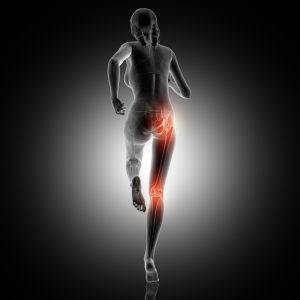Robotic Hip Prosthesis
Subject Summary: It is a type of prosthetic device used in cases where the person's hip joint cannot function. Robotic hip replacement Effective results are achieved in areas where the hip joint is damaged or worn. They are artificial joint implants placed to reduce pain, restore mobility and improve quality of life.
For an effective treatment process, it is important to be evaluated by the surgeon before the operation and to make the decision together. He will determine the most appropriate treatment option, taking into account the patient's health condition, symptoms, x-ray results and other medical data.
Who Does It Apply To?
It is a newer technology that follows advances in traditional prosthetic surgery. Robotic hip replacement It allows the surgeon who is competent in his field to work more precisely and in a controlled manner during the operation. Thanks to these systems, it provides 3D images and data. It helps the physician to plan the position of the implant perfectly.

If the hip joint is severely damaged as a result of a fracture, serious injury, or degeneration of the joint, prosthetic surgery may be considered. A hip joint infection can destroy the joint. Therefore, your mobility may be damaged. If the infection cannot be treated, robotic prosthetic surgery is used.
Fractures usually occur in elderly individuals as a result of falls or trauma. If the fracture is very serious and bone healing will be a difficult process, the patient's suitability is evaluated by your doctor.
If other conservative treatment options for hip pain or damage (medication, physical therapy, injections, etc.) have not produced sufficient results and are negatively affecting your quality of life, robotic hip surgery may be an option.
What are the advantages?
Robotic hip replacement The advantages of surgery are:
- More precise implant placement: It can improve the patient's joint function by providing the operating surgeon with better implant positioning.
- Less tissue damage: Unlike traditional methods, it is performed with smaller incisions. Thus, it can reduce the patient's post-operative pain and accelerate the recovery process.
- Less blood loss: Robotic systems play an effective role in minimizing blood loss during surgery.
- Shorter hospital stay: Robotic surgery can reduce hospital stay by allowing the patient to recover faster.
These advantages robotic hip replacement This indicates that surgery has the potential to provide better results and a significant improvement in the patient's quality of life. However, as with any surgical intervention, this surgery may have risks and complications. Therefore, it is important to consult with a surgeon and determine the best treatment option for your individual situation.
How is Robotic Hip Prosthesis Done?
Robotic hip replacement As part of the surgery, the patient's hip joint is first examined. He then uses x-rays and other imaging methods to evaluate the patient's condition.
During the planning phase, the robotic surgical system is used to evaluate the patient's anatomy and joint movements in more detail. This system offers the possibility of optimizing the position of the implant and achieving the best results.
It is used to provide real-time guidance to specialists during the surgical procedure. Their movements are controlled through the robotic system. He uses this information to ensure the hip prosthesis is placed correctly.
After the implant is placed, the specialist doctor is disconnected from the robotic surgery system. The entire surgery is performed under the control of your physician. The soft tissues where the procedures are carried out are closed. It is aimed to start the process required for the patient's recovery.
Post-Operative Process
Robotic hip replacement After surgery, it is important to take the following precautions to speed up the healing process and reduce the risk of complications:
The specialist physician will give you special instructions for the postoperative period. Read and follow these instructions carefully. Follow your surgeon's recommendations on issues such as medication use, dressing, and bathing.
Following prosthesis surgery, a physical therapy and rehabilitation program is usually recommended. This program strengthens your muscles, increases your range of motion, and allows you to return to your normal functions. Attend physical therapy sessions regularly and follow your doctor's recommendations.
Postoperatively, your surgeon will give instructions regarding weight-bearing restrictions. By following these recommendations, you can support the healing process by ensuring that there is no excessive load on the prosthesis area.

Regular doctor check-ups are important to monitor your recovery and detect possible complications early. Keep track of your appointments regularly without interruption. In this way, intervention is provided whenever you have any questions or concerns about your joint health.
A healthy lifestyle supports the healing process. Eat a balanced diet, do not smoke, limit alcohol and try to exercise. The overall health of your body helps your prosthesis integrate successfully and improve your function.
Robotic hip replacement There may be individual needs within the scope of subsequent treatment. Therefore, strictly follow your surgeon's instructions and recommendations. Additionally, if you notice any signs of problems or complications, you can contact our team for detailed information.
Frequently asked Questions
What is robotic hip replacement surgery?
Effective results are obtained compared to the classical method in hip joint deformities that need to be treated with surgery. Thanks to millimetric measurements calculated through robotic systems, improvement is achieved with the least margin of error.
What are the reasons for preference?
In line with the developments in the field of prosthetic surgery, it offers faster recovery and durability for many years. At the same time, the probability of the prosthesis being dislodged after the operation is extremely low.
How long does a hip prosthesis last?
The new generation hip prosthesis has the feature of protecting the soft tissue around the joint. It is resistant to walking, using stairs and similar activities for many years.
Will there be pain after the operation?
Unlike traditional prosthesis surgery, the pain level is quite low. For this reason, complaints such as limping and rapid fatigue are not encountered during the recovery process.
How long is the hospital stay?
It varies depending on the health status of the patient as a result of the examination of the physician who is a specialist in orthopedics and traumatology. Compared to traditional methods, patients can return to social activities in a short time following robotic hip replacement.






